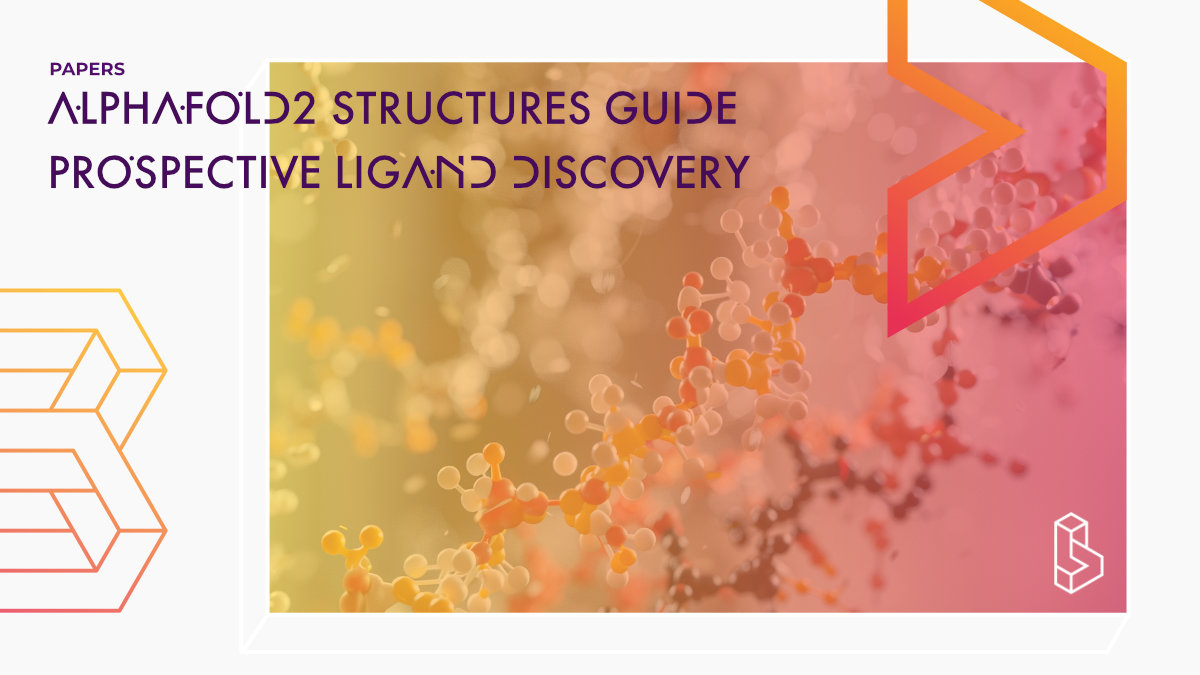This prospective docking study compares the effectiveness of docking large libraries against unrefined AlphaFold2 (AF2) models of σ2 and 5-HT2A receptors with docking against experimental structures. It finds high and similar hit rates and affinities for both AF2 and experimental structures, despite conformational differences in orthosteric residues, and suggests that AF2 models, while differing from experimental structures, are still relevant and effective for structure-based ligand discovery.
Abstract of AlphaFold2 structures guide prospective ligand discovery
“AlphaFold2 (AF2) models have had wide impact, but they have had mixed success in retrospective ligand recognition. We prospectively docked large libraries against unrefined AF2 models of the σ2 and 5-HT2A receptors, testing hundreds of new molecules and comparing results to docking against the experimental structures. Hit rates were high and similar for the experimental and the AF2 structures, as were affinities. The success of docking against the AF2 models was achieved despite differences in orthosteric residue conformations versus the experimental structures. Determination of the cryo-electron microscopy structure for one of the more potent 5HT2A ligands from the AF2 docking revealed residue accommodations that resembled the AF2 prediction. AF2 models may sample conformations that differ from experimental structures but remain low energy and relevant for ligand discovery, extending the domain of structure-based ligand discovery.”
Authors: Jiankun Lyu, Nicholas Kapolka, Ryan Gumpper, Assaf Alon, Liang Wang, Manish K. Jain, Ximena Barros-Álvarez, Kensuke Sakamoto, Yoojoong Kim, Jeffrey DiBerto, Kuglae Kim, Isabella S. Glenn, Tia A. Tummino, Sijie Huang, John J. Irwin, Olga O. Tarkhanova, Yurii Moroz, Georgios Skiniotis, Andrew C. Kruse, Brian K. Shoichet, Bryan L. Roth
Summary of AlphaFold2 structures guide prospective ligand discovery
Structure-based docking is essential in early ligand discovery, usually relying on experimental structures. However, many targets lack these structures, leading to the use of homology models, which may reduce performance. Recent deep-learning models like AF2 and RosettaFold have improved protein structure predictions.
While AF2 models have shown impressive global accuracy, their effectiveness in modelling ligand binding sites remains uncertain. Retrospective studies indicate AF2 models struggle with ligand recognition compared to experimental structures. This study aims to assess AF2 models’ prospective performance in ligand discovery for σ2 and 5-HT2A receptors.
Results
Find this paper
AlphaFold2 structures guide prospective ligand discovery
https://doi.org/10.1126/science.adn6354
Paywall | Google Scholar | Backup | 🕊
Cite this paper (APA)
Lyu, J., Kapolka, N., Gumpper, R., Alon, A., Wang, L., Jain, M. K., ... & Roth, B. L. (2024). AlphaFold2 structures guide prospective ligand discovery. Science, eadn6354.

